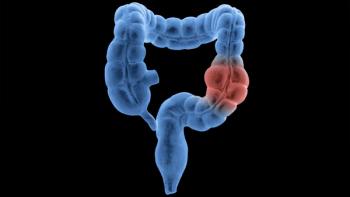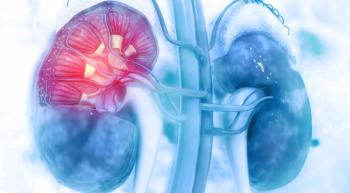
FDA Approves Niraparib For Patients With HRD+ Advanced Ovarian Cancer
The FDA approves the use of niraparib in the treatment of patients with HRD-positive advanced ovarian cancer based on results from the phase II QUADRA study.
The FDA has approved niraparib (Zejula) for the treatment of patients with advanced ovarian, fallopian tube, or primary peritoneal cancer who have been treated with ≥3 prior chemotherapy regimens, and whose cancer is associated with homologous recombination deficiency (HRD)—positive status.1
The approval is based on results from the phase II QUADRA study, which showed that niraparib elicited an overall response rate (ORR) of 24% (95% CI, 16-34), which was comprised of all partial responses, in the primary efficacy population of patients who had HRD and who received ≥3 prior lines of therapy (n = 98).2 The estimated median duration of response was 8.3 months (95% CI, 6.5—not estimable). HDR was defined by either a deleterious or suspected deleterious BRCA mutation, or genomic instability in patients with disease progression ≥6 months after response to the last platinum-based chemotherapy.
In the multicenter, open-label, single-arm, phase II QUADRA study, researchers evaluated the safety and efficacy of niraparib in 463 adult patients with metastatic, relapsed, high-grade serous epithelial ovarian, fallopian tube, or primary peritoneal cancer who previously received ≥3 lines of chemotherapy. Patients could not have prior exposure to PARP inhibitors on the study, and those without BRCA mutations must have progressed ≥6 months after their last dose of platinum-based therapy. HRD-positive status was determined using the Myriad myChoice CDx as either tumor BRCA mutated (n=63) and/or a genomic instability score ≥ 42 (n = 35).
Patients received oral niraparib at 300 mg daily continuously, beginning on day 1 in 28-day cycles until disease progression. The primary endpoint was the proportion of patients achieving an investigator-assessed confirmed overall response in patients with HRD-positive tumors—which include both patients with and without BRCA mutations—who were sensitive to their most recent platinum-based therapy who had received 3 or 4 prior anticancer therapies. Also, efficacy analyses were conducted in all dosed patients with measurable disease at baseline.
Regarding safety, the most common adverse events (AEs) that led to dose reductions or interruptions were anemia (21%), thrombocytopenia (40%), neutropenia (11%), nausea (13%), vomiting (11%), fatigue (9%), and abdominal pain (5%).
Niraparib was initially approved by the FDA in March 2017 for the maintenance treatment of adult patients with recurrent epithelial ovarian, fallopian tube, or primary peritoneal cancer who are in complete or partial response to platinum-based chemotherapy.
References
- FDA approves niraparib for HRD-positive advanced ovarian cancer. FDA. Published October 23, 2019. https://bit.ly/35YNYya. Accessed October 23, 2019.
- Moore KN, Secord AA, Geller MA, et al. Niraparib monotherapy for late-line treatment of ovarian cancer (QUADRA): a multicentre, open-label, single-arm, phase 2 trial. Lancet Oncol. 2019;20(5):636-648. doi: 10.1016/S1470-2045(19)30029-4.
Newsletter
Knowledge is power. Don’t miss the most recent breakthroughs in cancer care.





























































































